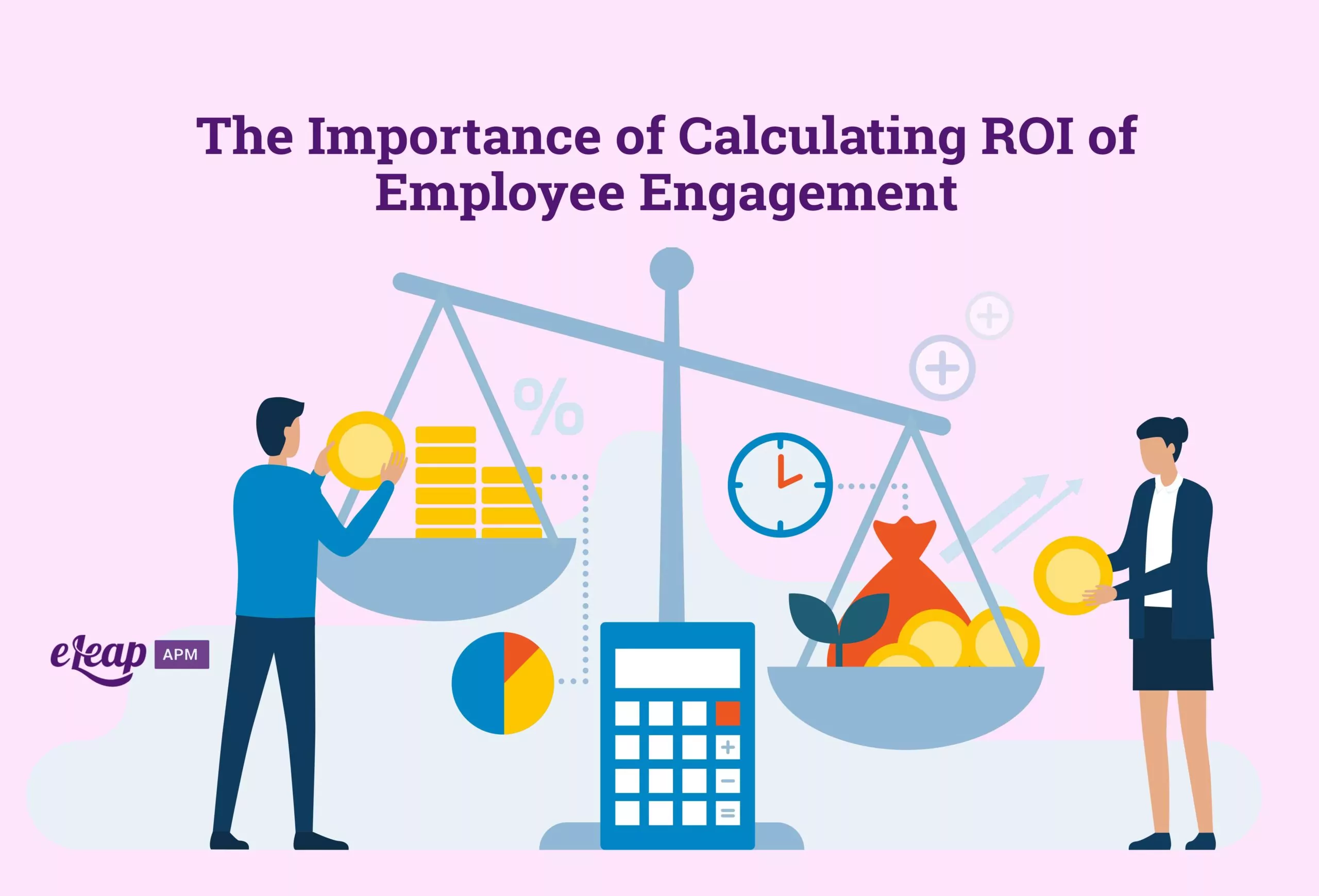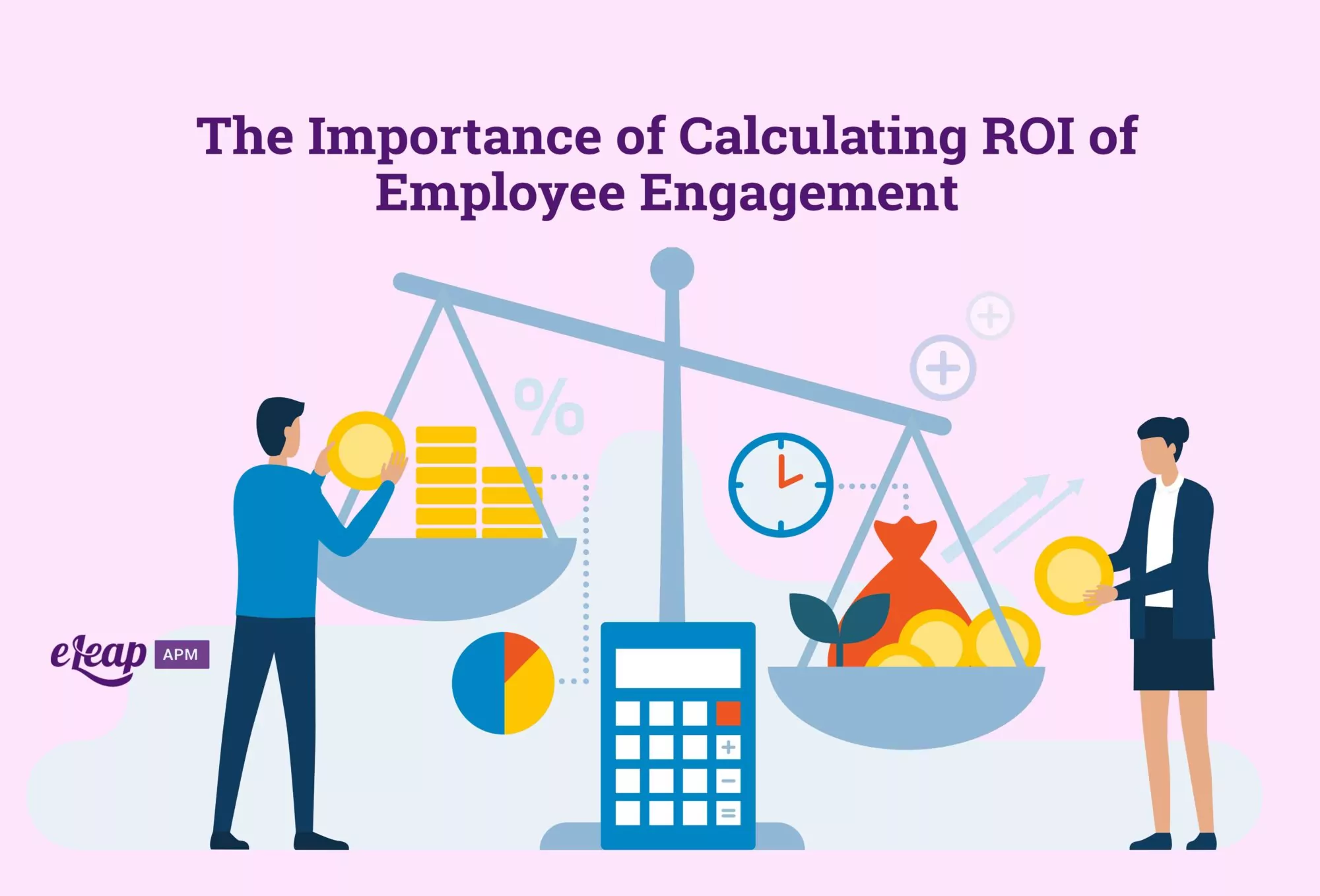The Importance of Calculating ROI of Employee Engagement

Why does ROI employee engagement deserve your attention? Engaged employees are proactive and passionate about their work. Their values align with the company’s mission and vision, which creates high morale and energy.
Engagement isn’t easily measured with numbers and hard data. Rather, it’s seen in how employees communicate with colleagues, their attitudes surrounding work, and their levels of performance.
High levels of employee engagement mean less turnover and absent team members. It means higher productivity and positive energy, which means better profits and a thriving business.
Focusing on this idea isn’t a side project. You can’t afford to ignore whether or not your employees are engaged because those that are not cost you money at every turn.
What do engaged employees look like?
- They are focused and efficient.
- They communicate openly and honestly about successes, struggles, and experiences.
- They care about their success and want to help others do well.
What does a business with engaged employees look like?
- It is more productive and profitable.
- Its employees show up on time and don’t miss shifts.
- It has higher retention rates.
How do disengaged employees cost a business financially?
- Disengaged employees aren’t productive, so a business doesn’t make as much money.
- Absent employees still receive a salary without producing revenue.
- Hiring and training new employees costs up to nine months’ worth of salary for each person.
All this works together to make an ROI value. Add together the increased revenue from higher productivity, money saved from more present employees, and money and resources saved from decreased turnover.

Increasing ROI Employee Engagement
People are responsible for their own happiness, that’s true. However, your role as a manager is to create a positive company culture in which people feel safe and supported. This creates a space in which employees are more likely to engage with their work. You can do this in several ways.
Feedback
One of the best ways to increase engagement is through regular feedback. Feedback isn’t always about negative performance or areas of improvement, either. Employees who receive consistent feedback about what they’re doing well are much more engaged than those who don’t.
Meet with people one-on-one, and not just during performance review meetings. Check in with employees before, during, and after projects. Discuss strengths and areas of improvement. Pop into people’s offices for quick check-ins during the day, not to micromanage but to show that you notice and care about them and their work.
Ask employees for feedback on your leadership and management, too. This shows that you value honesty and that you are also working to improve yourself. Teach them to request feedback on their own, too, taking ownership of their development and growth.
Flexibility
Your employees are adults. They have lives, families, and passions outside of their work. They also have skills and experiences which bring new ideas to the table that you might not have thought of before.
People who have autonomy and flexibility in not only how they do their work but where and when they get it done are more satisfied. They feel energized and accountable.
Covid showed that many jobs are easily done from home. Businesses just had people coming into the office to perform their work because that was how it was always done. However, allowing people the opportunity to work from home—even just two or three days a week—saves businesses money and often increases productivity.
Ask your employees how they work the best. Trust them to make decisions that benefit them and the company as a whole.
Experience
Over the past decade, with company culture presenting as a buzzword, managers and HR teams began to think about the ROI Employee Engagement experience. They put focus on elements of the work environment such as:
- Personal well-being and mental health resources
- Work-life integration
- Collaborative culture and flat management structure
- Open-concept, luxurious office spaces
- Health and fitness memberships
- Learning stipends
However, these aren’t the only areas that influence ROI Employee Engagement morale. Especially amid the pandemic, many of these company culture staples aren’t as easily accessible. People who work from home (or businesses that transitioned to fully remote work) don’t need or can’t utilize the in-person perks.
Businesses that want to elevate the employee experience need to reimagine how employees experience their jobs. Think about new ways to add to the positive company culture to stay competitive and set your organization apart from every other company in the industry.
Compassion
Interpersonal and non-verbal communication were once considered soft skills that high-level professionals didn’t need to focus on. However, we now know that empathy, compassion, and connection go far.
The coronavirus crisis of the last two years showed us that we are all in it together. We need each other to survive and to thrive. Everyone handles uncertainties and challenges differently, so listening to people and thinking about others helps those connections stay solid.
Celebrate people’s wins over group emails, company chats, and video conference calls. People still want recognition for their hard work and effort. Support each other when work is a struggle, too, and actively help people problem-solve so that they feel they have a safe place to grow.
Connection
Since so many people are working from home nowadays, groups must have other ways to connect. This goes for people on the same level but also for bosses.
Create a way for people to connect virtually. Think about Zoom coffee breaks, a company-wide instant messaging system, or an informal office Facebook group to share “water cooler chat.” People work better when they know and love their colleagues.
Deep relationships with colleagues bring resilience. People who enjoy their workmates want to come to work and they are willing to support each other in hard times. A team that helps lift each other up means burnout is less likely, which helps prevent turnover.
Talent
Even before the pandemic, human resources teams felt that acquiring adequate talent was a struggle. It was hard to find creative, innovative people who were ready to dedicate themselves to productive work. Then, budget cuts and a recession entered the scene.
This means that sometimes developing talent is the solution, instead of searching out completely new people. Every person has areas of growth and improvement that can be developed.
It costs you less money to offer training and learning opportunities to your current ROI Employee Engagement than to accept high turnover rates and start from scratch. Plus, employees who feel valued are willing to work harder and commit to their jobs.
Think about switching up teams and roles, too, when new skills are needed. Maybe someone has been doing well in a certain department and can use those skills to bring new life to a different type of project.
Keeping a flexible, dynamic structure in your organization also keeps people energized. They aren’t bored with their work and don’t feel tied down to something they aren’t passionate about.
Strengths
Every person has strengths that make work easier and more enjoyable. When people are allowed to utilize those strengths, it benefits the organization as a whole.
People whose work is connected to their passions and who love what they do perform at high levels. They also inspire others to reach higher and work with more authenticity and energy, too.
Sometimes, though, recognizing one’s strengths isn’t easy. Utilize tools to help your employees find their strong areas and then align their tasks with those. Ask them questions about their purpose and their goals to help open these conversations and determine clear answers.
Don’t be afraid to recognize areas for improvement, either. Weaknesses can turn into strengths when they are honed and utilized appropriately. Bosses who value growth and help scaffold development with compassion and encouragement set the table for engaged employees who also have high self-esteem.
Conclusion
Measuring ROI Employee Engagement is important—businesses spend hundreds of millions of dollars every year on tools to help measure the ROI of employee engagement. However, even with all of this attention on how much employees are engaged, less than half of workers are actually achieving their full potential in the office.
Your employees are more than just tools for profit. You know this. However, you also know that the bottom line of your company is to stay competitive in your field and to run a profitable organization.
You can hold both investing in your employees and investing in your company at the same time. Choosing, though, to concentrate on developing your employees’ morale and well-being naturally increases your ROI.
If you’re reading about ROI employee engagement, your organization may be in the middle of some struggle. Maybe your team members are checked out and unproductive. Maybe there is a high rate of absenteeism. Possibly you’re dealing with a low retention rate and you’re seeing the financial strain of all these aspects.
You can turn it around, though. Every company is a dynamic, changing organization that learns, grows, and develops into something better over time. Use these ROI employee engagement ideas to create a company culture that focuses on morale, well-being, and intrinsic motivation.